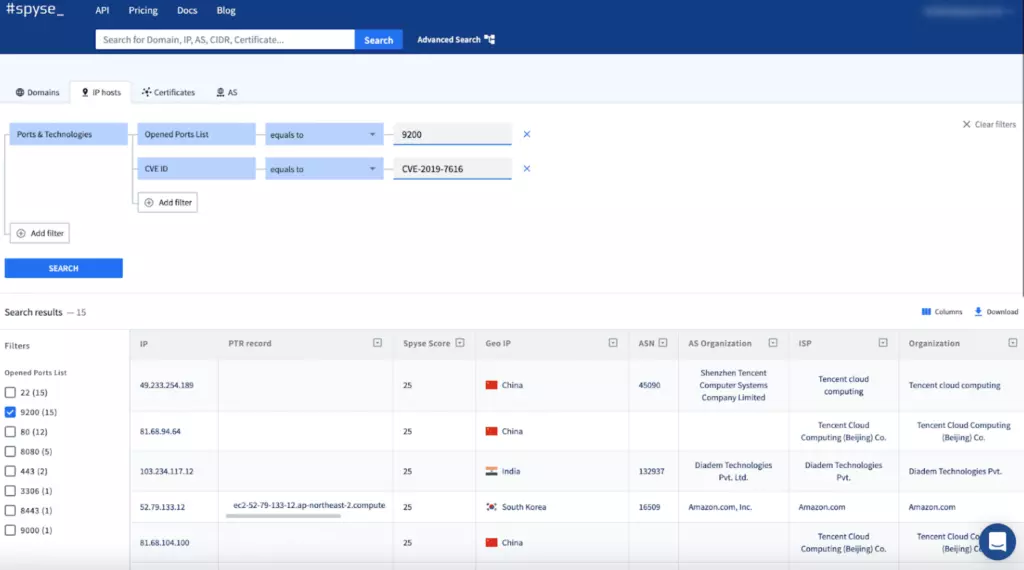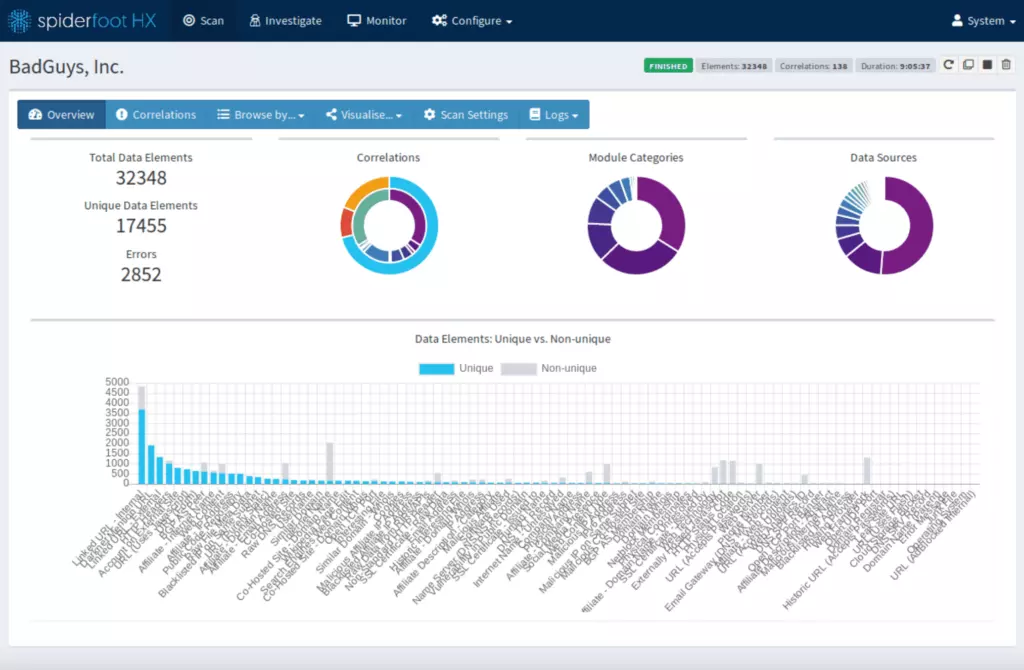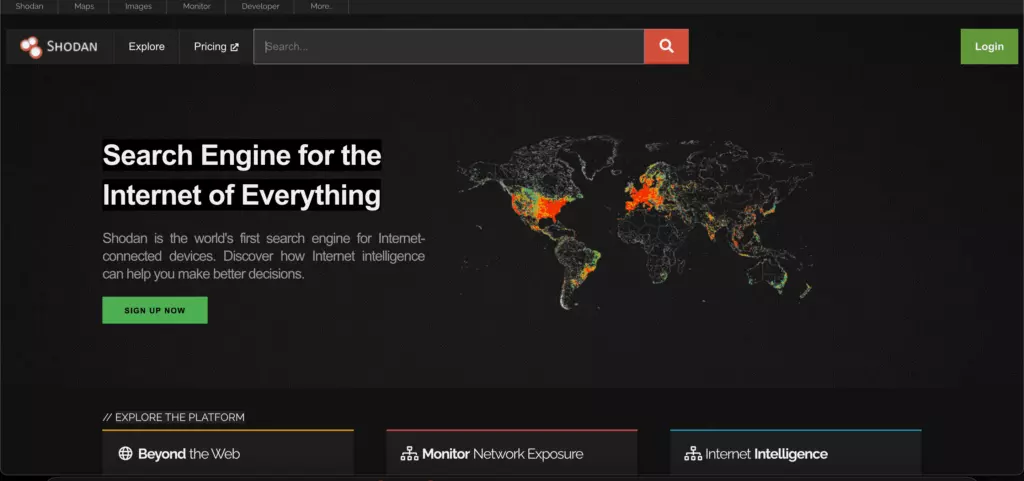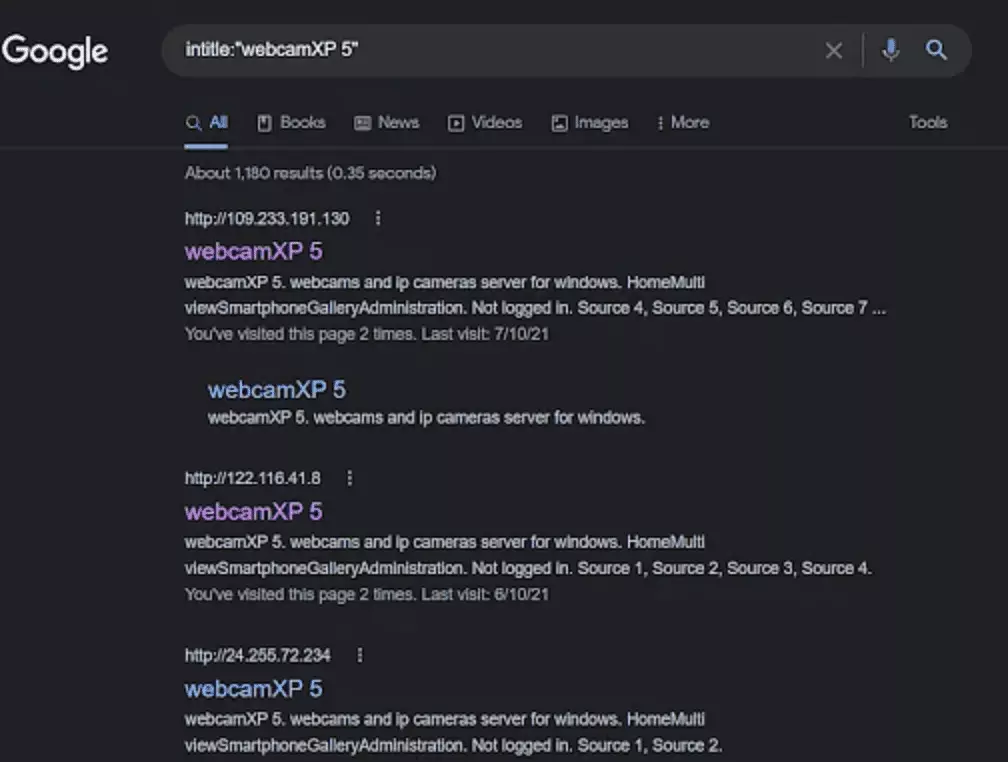

Open Source Intelligence (OSINT) involves collecting and analyzing data accessible to the public. In this comprehensive guide, we’ll explore the OSINT meaning and the core aspects of this intriguing field. You’ll discover various tools and methods employed in OSINT, understand its critical role in our data-centric society, and delve into its ethical implications.
What is Open-Source Intelligence (OSINT)?
Open Source Intelligence (OSINT) provides a highly effective method for gathering important information from public sources. It’s an invaluable resource for security experts and national intelligence agencies in their investigative efforts. However, it’s important to recognize that cybercriminals can also misuse this openly available data. For cybersecurity professionals, using OSINT can be a proactive measure to identify and counteract potential security risks by examining information that might attract cybercriminals.
What sets OSINT apart is its use of sophisticated technology to scour and interpret data found on public websites and in the deep web, where pages aren’t indexed by standard search engines yet still accessible to the public.
OSINT tools come in two options: open-source and proprietary. Open-source tools are free and can be customized by anyone, offering more flexible features. Proprietary instruments, conversely, are products made by specific developers. Regardless of the type, these tools are central to OSINT, facilitating the search for publicly available information.
Why does OSINT stand out?
Open Source Intelligence (OSINT) stands out in the intelligence community for the following reasons:
- Accessible and legal. OSINT stands out because it uses information that anyone can find and is all above board. It doesn’t depend on secret or hidden sources like other data collection methods. This means it’s open and follows the rules, highlighting a real dedication to being clear and playing by the book.
- A wide range of sources. You can look everywhere, from what people say on social media to news stories and official records. Thus, you can get a more extensive overview than other intelligence approaches offer, sticking to a few data sources only.
- High-tech tools for smarter analysis. Open Source Intelligence (OSINT) harnesses advanced tools like language models and machine learning. These sophisticated technologies are adept at filtering through vast amounts of data to identify key information more efficiently than conventional intelligence methods.
In short, OSINT is like the tech-savvy detective of the intelligence world, making it vital for digging up valuable data.
History of OSINT
OSINT’s journey began in the early 20th century, primarily during the World Wars, when nations tapped into public media like newspapers and radio for intel. It gained prominence in the Cold War, with the U.S. and allies mining open sources for insights into the Soviet bloc. This period marked the infancy of OSINT as a structured discipline.
The internet era transformed OSINT. As the digital landscape expanded in the 1990s and 2000s, so did the pool of accessible information. This shift brought challenges in managing the data deluge, leading to more automated and advanced analysis techniques. The 9/11 attacks further propelled OSINT into the spotlight. Intelligence agencies worldwide started using open-source data more extensively to understand and counteract terrorist networks. This phase underscored the importance of blending OSINT with traditional intel methods.
Today, OSINT is constantly evolving, fueled by big data and AI advancements. It plays a crucial role in understanding global trends and threats, especially in the realm of social media. We can expect OSINT to become even more tech-driven, though ethical and privacy considerations will likely influence its future trajectory.
How Do Attackers and Defenders Use Open Source Intelligence?
OSINT plays a pivotal role in the digital realm, serving as a valuable asset for both security experts and cyber attackers. This double-edged nature of OSINT underscores its effectiveness and multifaceted utility in the world of cybersecurity.
How Security Experts Use OSINT?
Security professionals and penetration testers use OSINT to uncover potential security gaps and fortify their defenses. They collect public data, which helps them foresee possible attack methods and address vulnerabilities before they’re exploited. This proactive strategy includes examining various sources of OSINT, like social media platforms, public records, and online resources. By doing so, they identify information about their organization that’s publicly available and could be used against them. This process aids in understanding how an attacker thinks, leading to stronger and more effective security strategies.
How Attackers Use OSINT?
Cyber attackers also turn to OSINT to collect vital details about their targets, aiding in planning successful cyber attacks. They search public sources for personal data, system specifics, network configurations, and employee details. This is often used in social engineering attacks, like crafting persuasive phishing emails, spotting vulnerabilities in network security, or impersonating individuals to gain access to secure areas or systems, both physically and digitally. The ready availability of this information makes OSINT a popular choice among cybercriminals.
Who Also Uses OSINT?
Open Source Intelligence (OSINT) is a versatile tool used by more than just penetration testers and cyber attackers. It’s also a valuable resource for professionals like journalists, researchers, law enforcement, and intelligence agencies. Journalists rely on OSINT to dig up stories and confirm facts, while researchers use it for academic or market studies. Law enforcement and intelligence agencies leverage it to spot criminal activities or security threats, often by analyzing social media trends and public records to find hidden information. This broad range of uses highlights OSINT’s significance and versatility in various fields.
OSINT Benefits
OSINT offers some benefits within other intelligence-gathering methods. Here they are:
- Public information access. This approach utilizes publicly available and legally accessible information, eliminating the need for costly and time-consuming efforts to obtain classified or restricted data.
- Varied information sources. Security experts and pen testers can browse websites, public records, and social media to view trends and public sentiments comprehensively.
- Timeliness. Stakeholders can gather essential data in real time, which is essential for making quick decisions in market shifts or emergencies.
- Affordability. Using publicly accessible information is cost-effective compared to other intelligence methods like Human Intelligence (HUMINT) and Signals Intelligence (SIGINT). This approach also reduces expenses related to specialized equipment or staff.
- Transparency. OSINT is transparent and easy to check out, allowing organizations to trust the accuracy and dependability of the information obtained.
All these benefits help Open Source Intelligence stand out among other approaches for data collection, making this process more effective and swift.
Intelligence Cycle
Now, let’s delve into the Intelligence Cycle. This structured method guides the collection and processing of information, ensuring a thorough grasp of the OSINT process. For effective investigations, it’s crucial to follow each step of this cycle.
Stages of the Intelligence Cycle
The Intelligence Cycle is roughly divided into five stages:
- Preparation. In this initial stage, investigators assess the needs and requirements of the request. There could be setting clear goals and finding the most relevant data sources.
- Collection. Once ready, you should gather data from the most relevant sources.
- Processing. After getting all the information, you need to organize or collate it.
- Analysis and Production. You should analyze the data to make sense of it (e.g., determining patterns or establishing a timeline). The result of this stage is creating a complete report with all the answers to the intelligence questions.
- Dissemination. The results of the entire intelligence gathering can be presented to the stakeholders in written reports, timelines, recommendations, etc.
Each stage is vital if your goal is to collect complete information about people or events.
OSINT Gathering Techniques
There are three key ways to collect data using OSINT:
Passive Collection
In the passive collection, the key is subtly gathering information without direct contact with the target’s system or network. This approach makes use of what’s readily available in the public domain. It’s akin to being a detective who relies solely on public information – browsing websites, diving into online articles and reports, examining public records, or scrolling through social media posts. This method is notably discreet and carries a minimal risk of detection, as it completely avoids direct engagement with the target’s systems. Typically, it is the initial phase in Open Source Intelligence (OSINT), providing critical details before moving on to more interactive methods.
Semi-Passive Collection
Semi-passive collection is more interactive than passive collection yet avoids direct contact with the target, acting as a midpoint between passive and active methods. It employs third-party tools for tasks like DNS queries, ping sweeps, and searching cached information online, ensuring no direct traffic reaches the target’s network. This method is slightly riskier in detection than passive collection but is less noticeable than active collection. It’s ideal when more information is needed than passive collection can provide, but without alerting the target.
Active Collection
Active collection is the most direct and assertive intelligence-gathering method involving hands-on interactions with the target’s systems or networks. It includes techniques like port scanning, vulnerability scanning, network mapping, and, at times, social engineering. This approach, which sends traffic or queries directly to the target, has the highest detection risk and is seen as quite aggressive. It’s typically chosen when in-depth, specific information is required and the risk of detection is deemed manageable.
Each method varies in how much it interacts with the target system and its likelihood of being noticed. Their range is from the discreet and unobtrusive passive collection to the more direct and assertive active techniques.
How does open-source intelligence (OSINT) work?
OSINT best practices are essential guidelines for effectively collecting, analyzing and utilizing public data for intelligence. These practices help ensure accuracy, relevance, and ethical and legal compliance in intelligence gathering. Key practices include:
- Setting clear goals. Define specific objectives before gathering intelligence, which helps focus efforts and select appropriate sources.
- Diversifying sources. Use profiles on social media, the latest news, public records, and other data sources to turn data into a complete digital profile.
- Verifying information. Cross-check facts and confirm the authenticity of data using multiple sources and tools.
- Adhering to ethics and legality. Respect privacy laws and intellectual property, avoiding deceptive methods and adhering to website terms of service.
- Leveraging advanced tools. Employ data scraping, natural language processing, and machine learning tools for effective data analysis.
- Keeping up with tech and trends. Stay informed about new digital tools and changes in the online environment.
- Documenting and organizing data. Maintain detailed records of findings for easy analysis and retrieval.
- Applying critical thinking. Critically analyze OSINT data by identifying patterns, spotting inconsistencies, and being aware of any biases.
Adopting these practices ensures effective intelligence gathering in OSINT activities.
OSINT Tools
Here are some of the most popular OSINT tools.
X-Ray Contact
It is an easy-to-use instrument for finding people with a limited amount of input data at hand. This service aggregates information from different databases to create a comprehensive person of interest profile. If the individual is present in one of the sources, you will be able to find it with X-Ray Contact. Key features are:
- Find a person by photo.
- Geolocate a person.
- Research names and usernames.
- Investigate based on a social media link.

Maltego

Maltego is a powerful tool in the Kali Linux operating system used by pen testers and ethical hackers. It’s an open-source tool, but you’ll need to create an account on Paterva, the provider of this solution. Maltego offers a unique “machine” feature, a customizable scripting mechanism that users can run against a specific target to collect the necessary data.
Key features of Maltego include the following:
- Built-in data transformations
- Custom transformation options
- Built-in footprints for data collection and visualization
They make Maltego a versatile and valuable tool for anyone involved in network security, pen testing, or ethical hacking.
Spyse

Spyse is a specialized search engine for security and intelligence experts, focusing on “Internet assets.” It gathers and analyzes data from open sources, pinpointing potential security risks.
Key features of Spyse:
- Gathers information from websites, their owners, and the underlying infrastructure
- Collects data from publicly accessible Internet of Things (IoT) devices.
- Discovers links between different entities
- Identifies and reports on publicly exposed data that poses security threats
This tool is designed to be user-friendly and professional, offering crucial insights for cybersecurity.
Spiderfoot

Spyse is a search engine tailored to security professionals targeting Internet assets. Its main functions include:
- Gathering and analyzing open-source data from websites, their owners, and infrastructure
- Collecting information from publicly available IoT devices
- Finding connections between various entities
- Highlighting publicly exposed data that could be a security risk
This streamlined tool provides essential cybersecurity insights in a user-friendly format.
Intelligence X

Intelligence X is a unique archival service dedicated to preserving web pages removed for legal reasons or content censorship. It archives a wide range of content, including controversial or dark material. This encompasses data from the public internet, dark web, Wikileaks, government sites from cyber-active nations, and various data leaks.
Key Features of Intelligence X:
- Search functionality for email addresses and other contact details
- Advanced searches on domains and URLs
- Capabilities to search for IP and CIDR ranges, supporting both IPv4 and IPv6
- Searches for MAC addresses and IPFS Hashes
- Financial data search, including account and credit card numbers
- Searching for personally identifiable information
- Access to Darknet content from Tor and I2P
- Archives from Wikileaks & Cryptome
- Access to government sites from countries like North Korea and Russia
- Comprehensive database of public and private data leaks
- Whois Data availability
- Dumpster category for miscellaneous content
- Public Web archives
This service offers a professional yet accessible way to access a broad spectrum of archived digital content.
Shodan

Shodan is a cutting-edge security monitoring tool for deep web and IoT network exploration. It allows users to find various network-connected devices, such as servers, smart electronics, and webcams.
Key features of Shodan:
- User-friendly search engine interface
- Details on devices using protocols like HTTP, SSH, FTP, SNMP, Telnet, RTSP, and IMAP
- Filtering and sorting results by various data (e.g., protocol, network ports, region, and operating system)
- Providing access to many connected devices, from home appliances to public utilities like traffic lights and water control systems
The secret of Shodan’s success is a smooth mix of usability and comprehensive network monitoring capabilities.
BuiltWith

BuiltWith offers a comprehensive database of websites detailing the technology stacks each site employs. Integrating BuiltWith with security scanners enables the identification of specific vulnerabilities on a website.
Key features of BuiltWith:
- Reports on the content management system (CMS) used by a website, including its version and active plugins
- Details other infrastructure elements of a website, such as CDNs (Content Delivery Networks)
- Lists JavaScript and CSS libraries a website utilizes
- Provides information about the web server hosting the website
- Shares details about analytics and tracking tools a website uses
This tool is a valuable resource for understanding the technical setup of websites in a user-friendly yet professional manner.
HaveIbeenPwned

HaveIbeenPwned is a customer-oriented service that helps people check if their data has been exposed to data breaches. Developed by security expert Troy Hunt, it offers several key features:
- Finds whether any past data breaches have compromised a specific email address
- Checks accounts on popular platforms (e.g., LastFM, Kickstarter, WordPress.com, and LinkedIn) for any breach exposure
This tool provides an easy-to-use yet professional way for every user.
Google Dorking

Google Dorking is a technique, rather than a tool, frequently used by both security professionals and hackers to uncover private data or security vulnerabilities using the Google search engine.
Leveraging Google’s extensive database of internet content, this technique utilizes advanced search operators to pinpoint potentially useful content for attackers.
Common Google Dorking Operators:
- Filetype: Finds exposed files of specific types that may be exploited
- Ext: Locates exposed files with particular extensions useful in cyber attacks, like .log files
- Intitle/inurl: Searches for sensitive information in document titles or URLs, such as URLs containing “admin,” which could be valuable for an attacker
- Quotes: This operator allows for the search of exact phrases. Attackers use it to find strings indicating server issues or vulnerabilities
Google Dorking uses these operators to identify data that attackers might inadvertently expose online.
What Are OSINT Skills?
Open Source Intelligence (OSINT) skills combine the expertise needed to gather, analyze, and leverage publicly available information. Crucial in fields like intelligence, security, and law enforcement, these skills include:
- Identifying and understanding information from various open sources, such as websites and social media
- Mastering OSINT tools and techniques, including search engines and data analysis
- Analyzing open-source data to spot trends and connections
- Building a network of informative contacts
- Presenting findings clearly and persuasively
OSINT skills merge technical knowledge, analytical thinking, and interpersonal communication, which is essential for roles relying on open-source data.
How can you use OSINT to protect your network?
There are two critical steps for protecting your network using OSINT. Let’s review them in more detail.
Information Gathering
The initial phase involves gathering data from open sources to the public. This encompasses details about your organization that are accessible to everyone and the latest updates on threats, vulnerabilities, and attack techniques. To find this information, websites, online forums, social media, and professional networking platforms are excellent resources to explore.
Threat Intelligence
OSINT is valuable in modern threat intelligence. This approach involves collecting, analyzing, and making sense of data from publicly available sources. It also determines, evaluates, and tackles possible security risks to an organization. Let’s dive into how OSINT can be effectively used for threat intelligence.
- Data collection. Start by gathering information from various public sources such as social media, blogs, news sites, and online forums. Utilize specialized search engines and tools to streamline this process for efficiency.
- Data analysis. Analyze the collected data to extract vital information, focusing on identifying potential threats or security risks. Employ techniques like keyword searches, pattern recognition, and sentiment analysis.
- Threat Identification. Use OSINT to pinpoint potential threats, from cyber threats like new malware to physical security concerns.
- Assessment and validation. Evaluate the identified threats’ credibility and potential impact, cross-referencing with other sources to validate their significance.
- Monitoring and trend analysis. Continuously monitor open sources to track ongoing trends, aiding in predicting future threats and understanding the evolving security landscape.
- Integration with internal data. Enhance threat perception by integrating OSINT with internal data, such as logs and incident reports. This combined approach improves risk assessment and decision-making.
- Actionable intelligence. Transform OSINT into actionable intelligence, offering insights to shape security strategies and response plans, effectively translating data into valuable, actionable information.
- Compliance and privacy. Always consider legal, ethical, and privacy standards when using OSINT, ensuring adherence to relevant data protection laws.
- Tool and skill enhancement. Develop necessary skills and tools for effective OSINT, including training in data analysis and cybersecurity and investing in specialized tools for better efficiency.
OSINT serves as a highly effective approach for organizations to pinpoint and tackle security threats actively. By utilizing readily available information in the public domain, organizations can uncover potential risks and craft effective strategies to counter them. This proactive stance is crucial for maintaining heightened security in our ever-more connected world.
What is the OSINT Framework?
The OSINT framework is a resource for finding tools and resources for conducting open-source intelligence. It’s trendy among security researchers, investigative journalists, and in various fields requiring research skills.
Let’s look at some key aspects of the OSINT framework:
- Structured resource directory. It neatly categorizes various tools and resources, covering domain names, email addresses, and social networks. This clear organization simplifies locating the most suitable tools for diverse needs, making it more effective.
- Various data collection tools. The framework offers extensive tools, ranging from straightforward web search utilities to advanced tools for data analysis and visualization. This diversity ensures that users of all technical skill levels and intelligence-gathering needs can find something suitable.
- Commitment to legal and ethical practices. A vital aspect of the OSINT framework is its strong emphasis on legal and ethical information gathering. It’s crafted to support and encourage legitimate OSINT research and investigative work, ensuring users adhere to high standards of legality and ethics.
- Global application. The OSINT framework is not just beneficial for experts in particular sectors; its principles and resources have worldwide applicability. They are incredibly useful across various fields that rely heavily on information gathering and analysis.
- Online accessibility. This framework is mainly available online, offering easy access to anyone around the globe with an internet connection, broadening its reach and usability.
You can easily find various pieces of advice from renowned security professionals since the selection of OSINT tools is vast.
Conclusion
In this article, we delved into the OSINT definition and its significance. We highlighted several essential resources where many OSINT tools are available, catering to diverse information-gathering needs. Additionally, we showcased a few of these tools, demonstrating how OSINT works in practice.
Grasping the nuances of collecting open-source intelligence is crucial for anyone in the cybersecurity field. Understanding its digital presence is essential, whether it’s about safeguarding a network or probing it for vulnerabilities. This insight lets you see things from a potential attacker’s perspective, thereby enabling you to develop more robust defense strategies.


